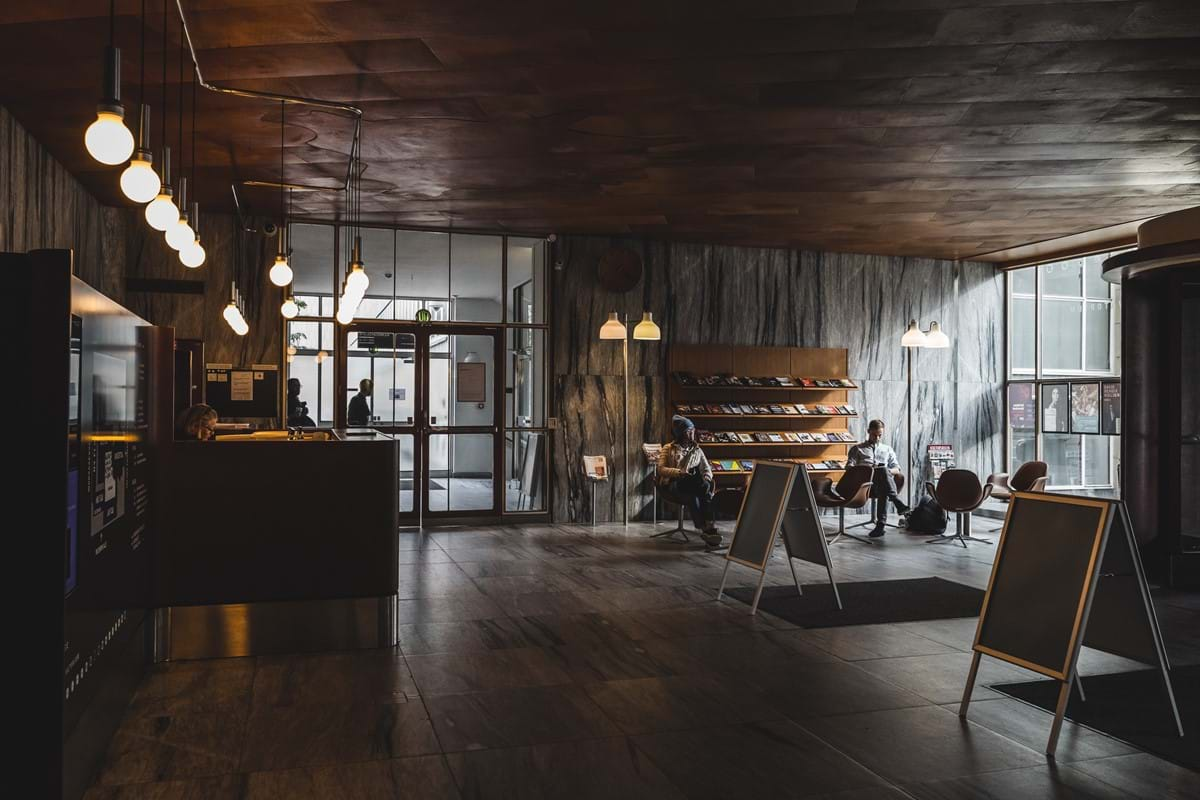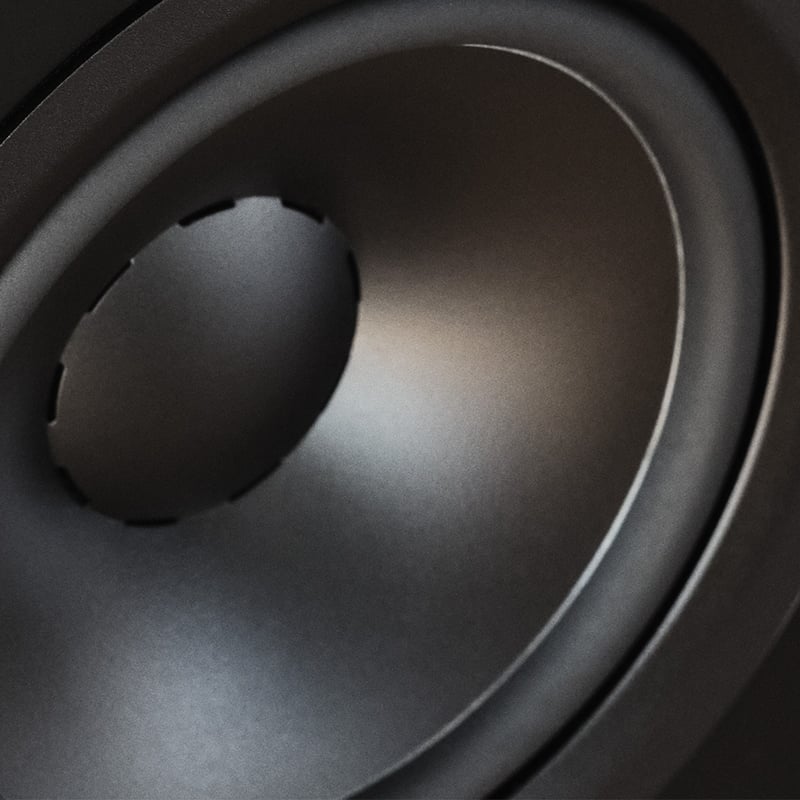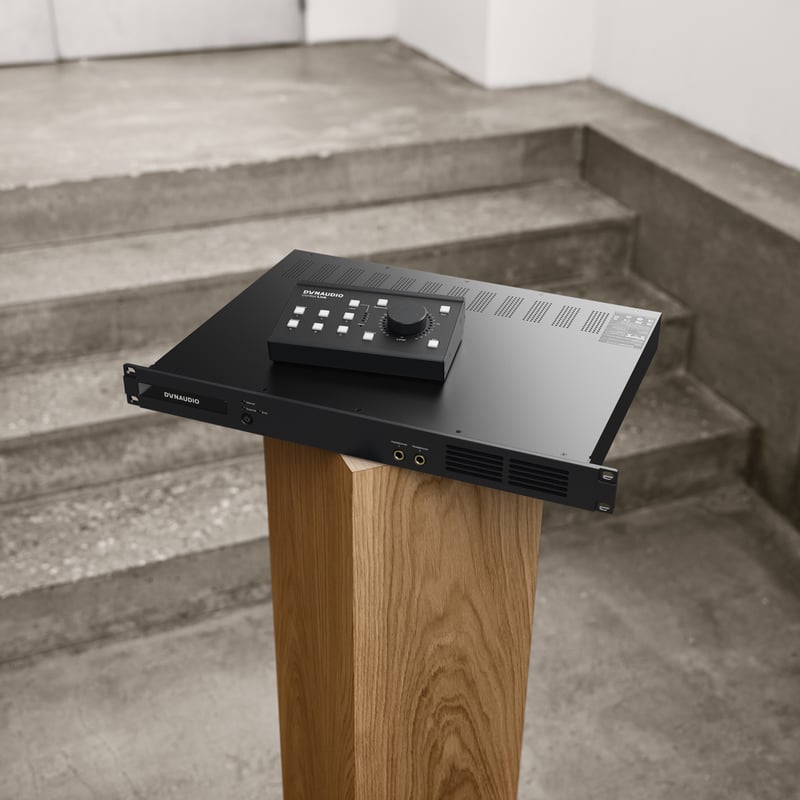Put yourself in front of A Thing playing music and your brain performs a massive gear-shift. It doesn’t matter what the Thing is. It could be a pair of speakers, a band, a DJ, a symphony orchestra… suddenly your whole world closes in on a single point.
The room seems to disappear and, unless you’re unfortunate enough to be sitting right behind the one person in the place wearing a ten-gallon Stetson hat (we’ve all been there), so does the audience. You’re in the moment. It’s just you and the music.
It’s easy to think that we see a performance in front of us and we merely zero-in on it as passive observers; that It’s something that happens at us.
But music doesn’t exist on a flat stereo plane. Like the people who perform it, it’s three-dimensional. It’s involving. The soundwaves that convey it wash over us, bouncing off walls, and ceilings, and floors, seats, the people watching… and off each other. They come at us from all directions. Music is as much the space it’s performed in as it is the notes being played.
Another dimension
Great stereo and surround-sound mixes go some way towards giving a more realistic representation of recorded music. A skilled engineer can escape the confines of a two-channel set-up and make it seem as if instruments and voices are coming from between, outside, or even a little bit in front of or behind the speakers. Multi-channel production, with speakers to the sides and rear, can expand the soundfield even further. But it’s still largely two-dimensional.
What about live performance? The top-brass at the Royal Danish Academy of Music in Copenhagen reckon they can take sound to new heights. In their ears, more is more – which is why they’ve peppered Dynaudio Pro loudspeakers around one of their concert halls. They’ve put them around the entire space… and all over the ceiling. The performance space is going fully 3D.
Hans Peter Stubbe Teglbjærg is an associate professor of electro-acoustic composition at the Conservatory. He’s a specialist in spatial experiences – 3D sound – and he’s one of the masterminds behind the project.
“It’s true that the industry has developed a lot of skill in stereo mixing. There’s a lot we can do – and we can even create a kind of 3D audio, but we really have to squeeze a lot into two tracks,” he says. “When you start to work with larger systems you immediately discover where everything has a natural location. Everything can work together simultaneously.”
“Larger” is an understatement. The team has fitted a whopping 48 loudspeakers in the room: 42 LYD 5s in a ‘dome’ around the space, plus four 18S subwoofers in the corners and a final stereo pair of LYD 8s. And they’re all placed with absolute precision to create a totally immersive soundfield.
In other words, they can position a sound, an instrument, a voice – whatever they want – at any point in 3D space in the centre of the room.
5 is a magic number
Stephen Entwistle, Senior Designer, Acoustics at Dynaudio, was part of the team that put the system together. He’s also one of the LYD range’s creators. “Everyone is used to stereo sound, or regular surround-sound for films,” he says. “There isn’t much pure music done in surround – and when it is, it’s usually attached to a video to give it context. Rooms and programmes like this, where they’re challenging composers to make work for these environments, are going to make a big difference.
“When we talked about the project at the start, 18 months ago, they had a design idea of what they wanted to do and how they’d fit it. That room is massive, so our initial thought was ‘how do we deliver a reasonable sound pressure level?’. In the end it wasn’t a problem; we only needed 85dB at 1m. So then the conversation turned to which speaker would be best.”
In Entwistle’s view, it was all about the LYD 5: “Their imaging is just outstanding in a stereo pair – so in the context of a giant sphere in the space, the deciding factor was being able to get that image anywhere in the middle.”
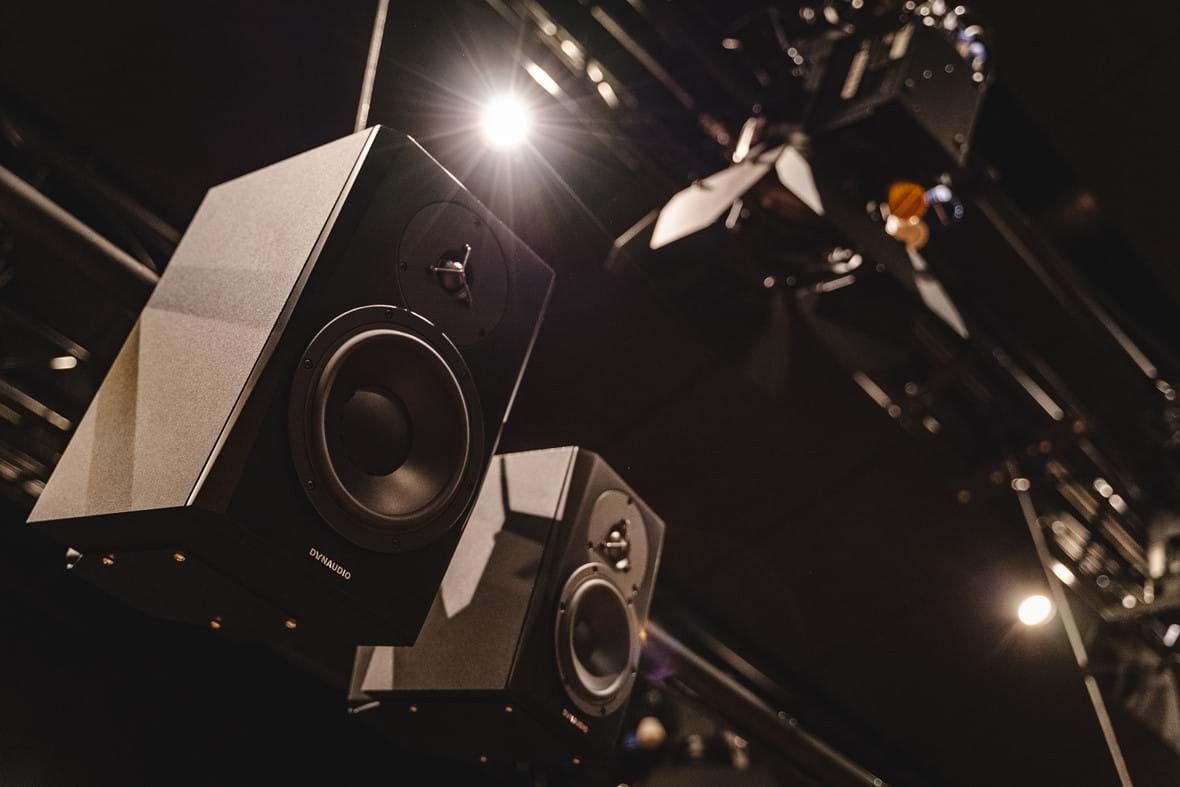
Teglbjærg is a fan of consistency – something the LYD range is legendary for. “We considered different brands, looking for something that wasn’t too ‘pointy’-sounding – still great-quality, and rich in the frequency spectrum. We didn’t really need huge power; we were going for covering the hall with as many points as possible,” he says. LYD 5 it was, then.
And since true 3D audio is so new, he’s happy that the Conservatory – a traditional place with traditional ways of doing things – is getting involved straight away. Going “all-in”, he says, means it can remain at the forefront of technical and artistic development: “When they decide to do something, they take a big step. And I appreciate that. Working here is great fun and it’s a great pleasure to see them say, ‘OK. Now we want to do it; let’s do it properly’.”
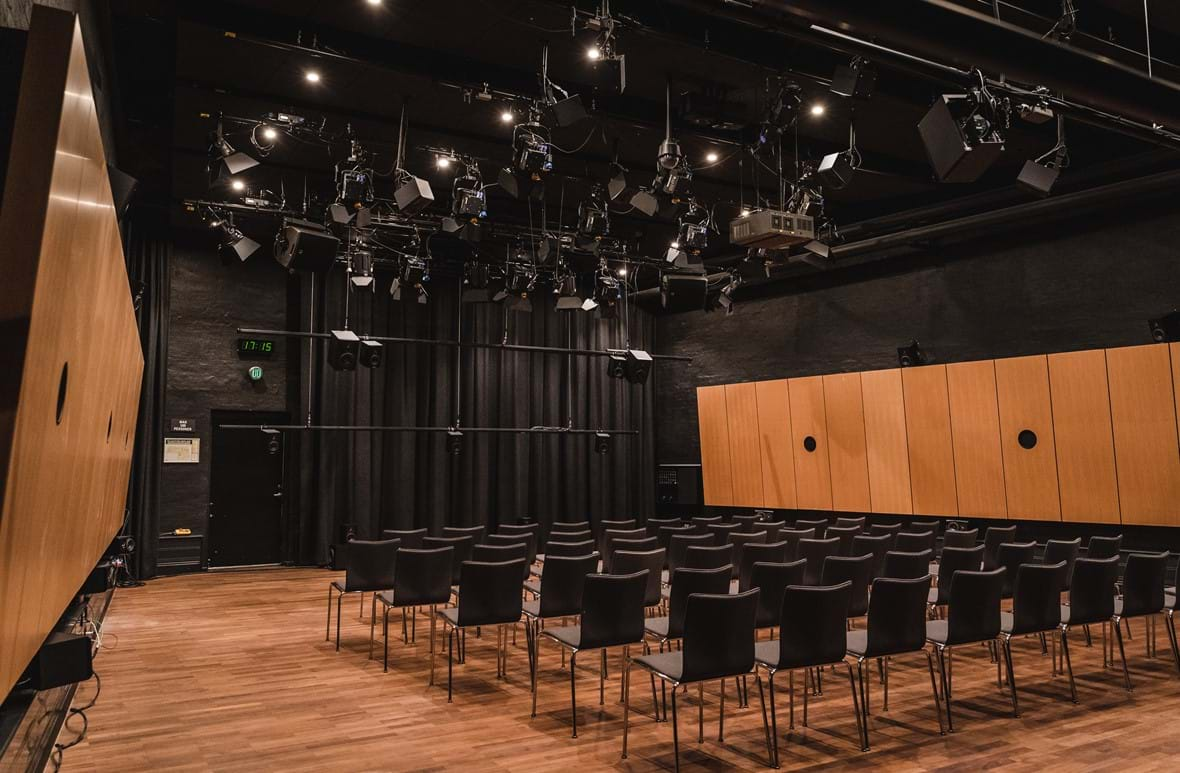
Expect the unexpected
The evolution of modern Western music has been an iterative process, taking its artistic cues from the technology and spaces it was written for. Churches, parlours and living-rooms gave way to theatres, arenas, outdoor festivals and modern concert-halls with differently shaped rooms.
Through it all, though, people have listening to music played directly in front of them. Teglbjærg hopes audiences will start to discover new types of expression; new ways of sensing and engaging with audio. “We’ll pull their legs a bit!”, he laughs.
“It’s all very well calibrated to the room. We almost don’t feel that we’re using loudspeakers!” says Jesper Andersen, associate professor and head of Tonmeister Studies. “If there are only a few of them, there’s a tendency to say ‘we’ll place this sound here; we’ll place that one there’. But we have so many of them here that it becomes an entire soundscape.”
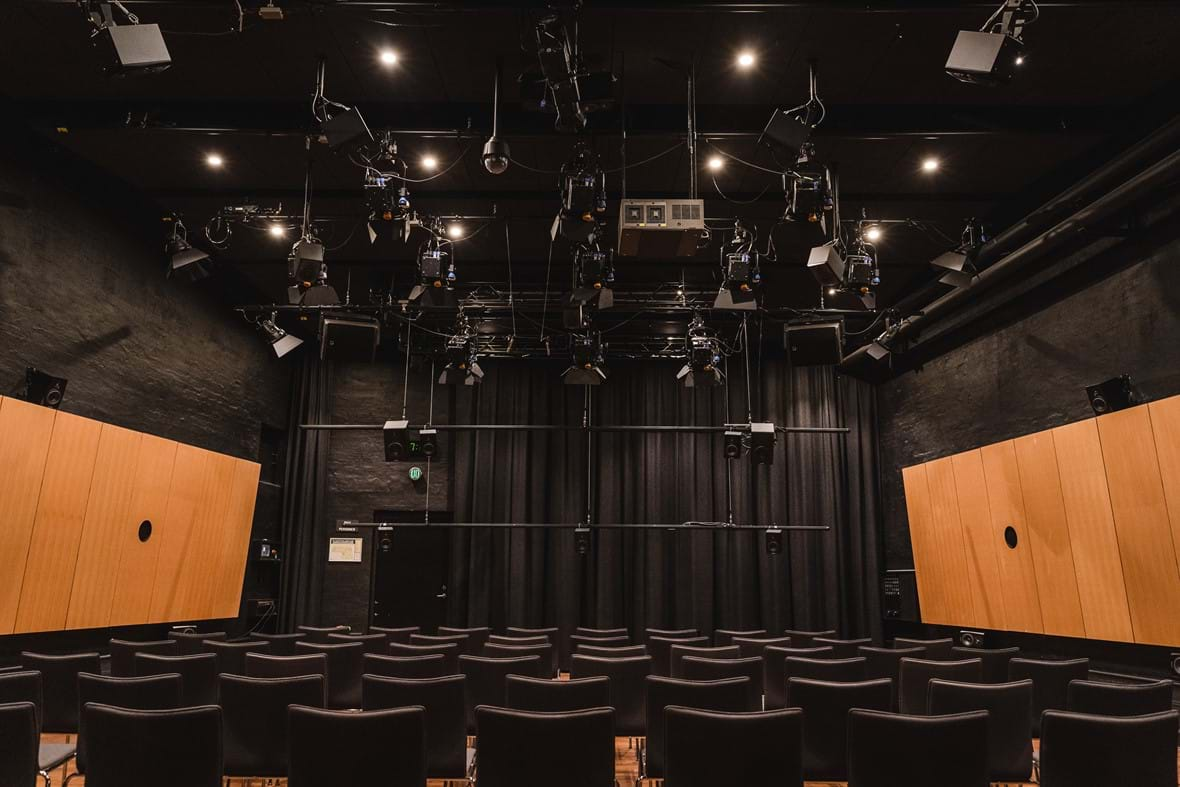
A Tonmeister – a ‘sound master’ – is someone with an intimate understanding of music as an art-form, as well as in how to record and reproduce it. The Royal Danish Academy of Music is one of the few places in a world to offer a full-fat course in the discipline. The system is in good hands.
“The precision of the set-up, with the loudspeakers and the speaker-management system, is very similar to something we’d have in a laboratory – but now we have it in a concert space,” Andersen says.
He adds that it also has great appeal for film music producers and composers. The set-up can also play ‘old-fashioned’ 5.1-channel surround, as well as Dolby Atmos and Auro-3D formats. “It’s very relevant for us as a music academy to work with these, because music is such a big part of movies – we have a good cooperation with the Danish film school to work on this.”
Curtain up…
Opening-night saw the system put through its paces in a variety of entertaining and eyebrow-raising ways. As well as showcasing pieces written specifically for the system (which had the audience marvelling at the incredible richness of the performance) the team recreated the sound of the Conservatory’s main concert hall in the smaller installation room. Anderson explains: “We achieve that by capturing the sound with an immersive microphone set-up – nine mics in different positions.”
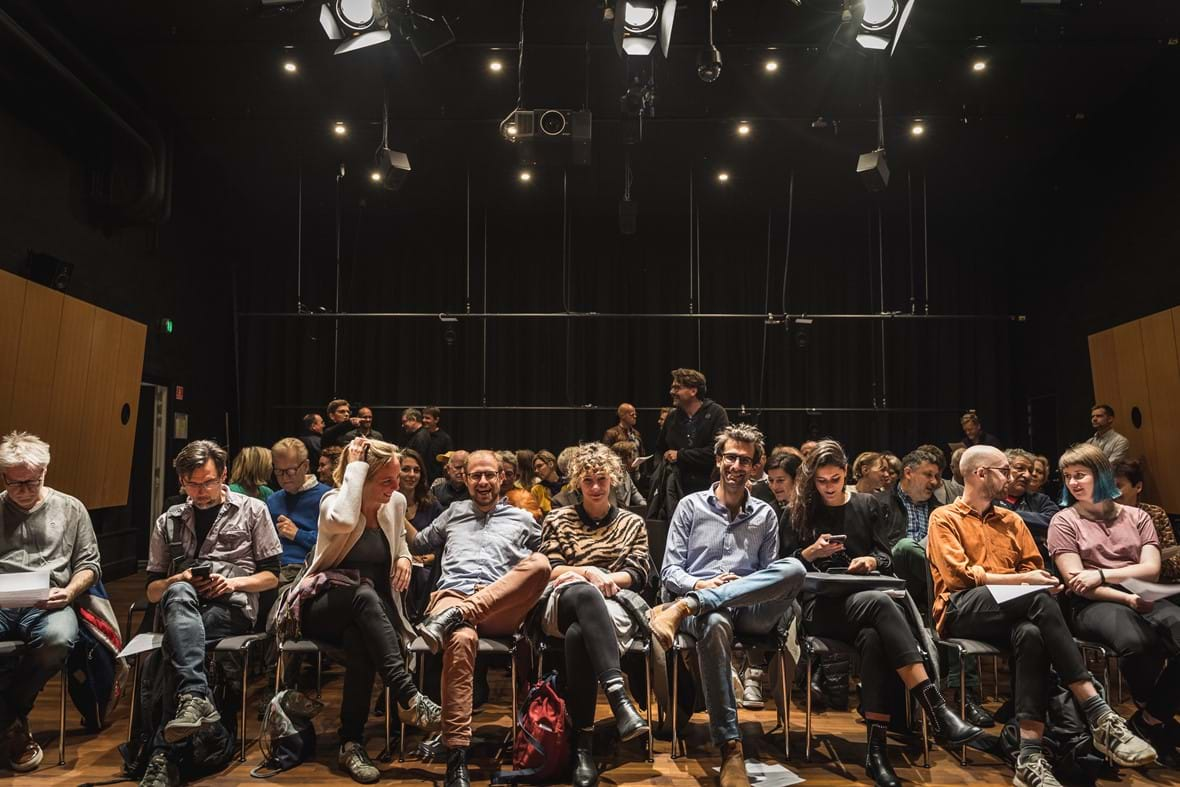
A room within a room, then. The potential is there to transport audiences to pretty much any concert hall in the world – and even to create spaces that don’t exist in real life. “The system can be used for music production, film music and so on, but the huge thing here is that composers can create impossible spaces and make music that might fly around and come from all directions,” he adds.
Teglbjærg says creative development was one of the goals from the start: “We needed a compromise of two main things: it should be easy to locate sounds, but we also wanted to be able to create a rich ambience where sound is less localised”.
If you think those seem to be at odds with one another, you’d be right. But that’s where the creative aspect comes in. Teglbjærg says that, in contrast to traditional composition and recording approaches, artists will inevitably begin to start to think of space as early as possible – and compose into it, rather than hoping the room (virtual or otherwise) will jive with the music they create.
The future for immersive audio is bright. Complicated, tricky and probably frustrating at times. But that’s where many artists produce their best work. And after the performance, Teglbjærg is absolutely buzzing – his mind clearly already working on the next project: “I want to create a kind of simultaneous situation being in air and underwater at the same time…!”
“Composing within space is so rich,” he says. “It engages all the areas I could dream of. I’ve made a long trip from instrumental composition, electronic composition, performing, electronic and so on – and I’ve seen an area where everything can meet. I think there are a lot of students who can find themselves in this format – I hope. This is my gasoline!”
For more information on the LYD range of studio monitors, click here.
To find out more about the Royal Danish Academy of Music, click here.
Sign up to get more great articles
Nothing compares to the satisfaction of knowing – for a fact – that something is as good as it gets


